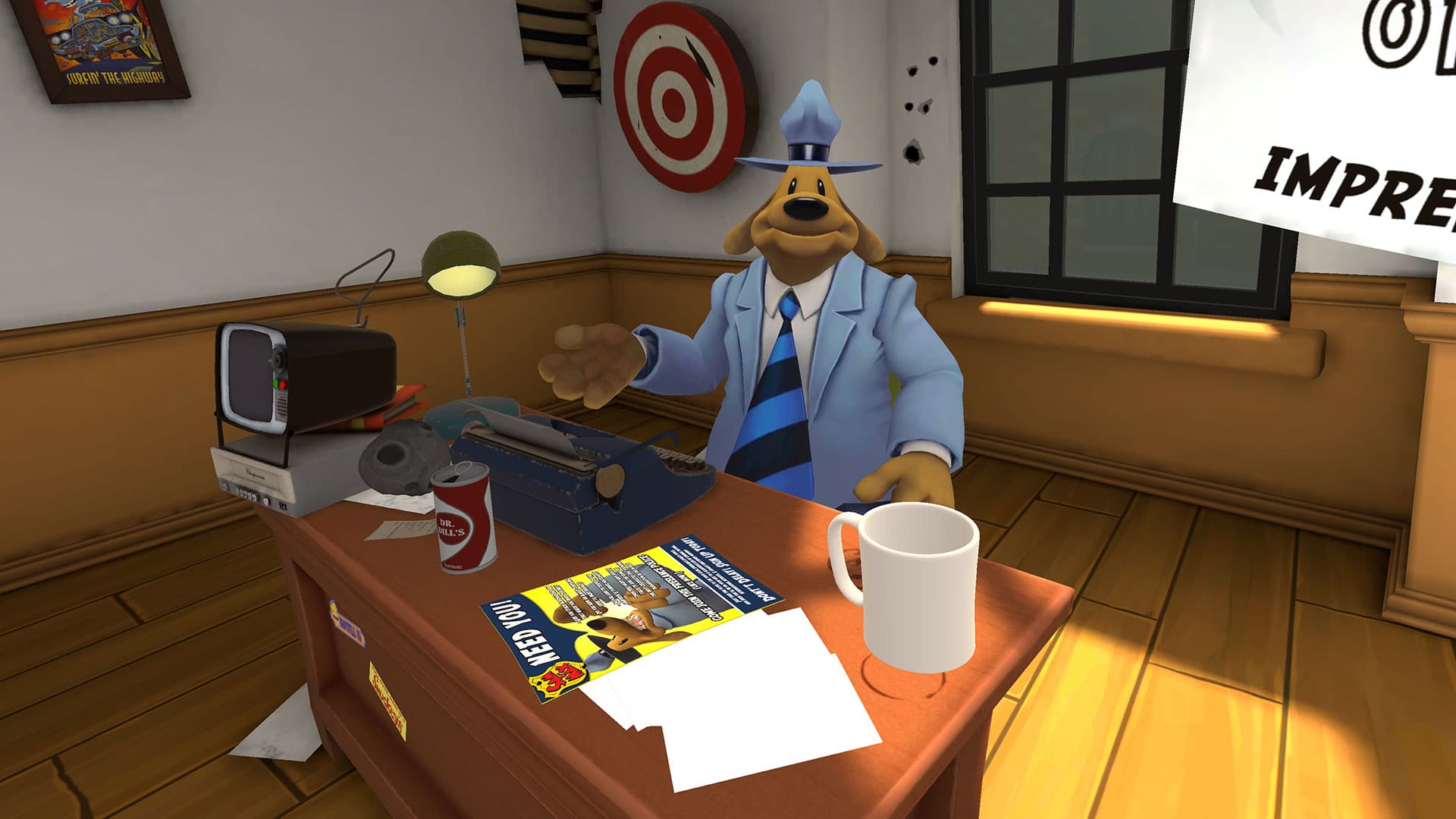
The art of developing AR and VR experiences is a moving target. The underlying technology continues to evolve as do users’ interests and expectations. Companies across the spatial computing spectrum are meanwhile trying to feel out use cases and interactions that resonate.
This moving target is the case for all kinds of immersive experiences but it’s most evident in gaming, given the category’s early popularity (especially in VR). We have first-person shooters, rhythm games like Beat Saber, cockpit experiences, and 3D puzzlers among other formats.
One recent game that both defies and combines various formats into several levels and sequences is Sam & Max: This Time It’s Virtual. The game parlays endearing IP into a narrative-driven arc that’s part Job Simulator, part adventure game, and part category unto itself.
Panning back, this represents game developer Happy Giant’s first major VR title after producing several AR games. This gives it unique perspective into the dynamics of both mediums, which CEO Mike Levine recently discussed with Anthony Vitillo — the focus of this week’s XR Talks.
Defying Gravity
In developing a successful VR game, one of Levine’s high-level takeaways is the inherent differences from previous efforts in mobile AR game development. The latter includes the QuasAR battle game and the Untamed ARena companion AR experience for WowWee toys.
Specifically, mobile AR dynamics present game-design challenges. For one, mobile AR’s upheld orientation causes relatively short sessions. That works great for snackable AR ad campaigns or product visualization, but not for gaming which tends to succeed on longer sessions.
You could argue that Pokémon Go has long sessions. But the phone isn’t upheld throughout — much less in AR mode. In fact, Niantic has quantified the average AR time as 2-3 minutes per Pokémon Go session. The rest of the experience is propelled by geospatial mechanics.
Levine also pegs Pokémon Go as an outlier in terms of revenue success. In most other mobile AR gaming, monetization challenges persist as the medium is too early and unproven to get users to pay for it. Pokémon Go has defied gravity as an exception rather than a rule.
AR is a Snack, VR is a Meal
The above factors drove Levine and company to look to VR. Because VR is a “meal” (AR is a snack), the session-length challenges referenced above aren’t as prevalent. Of course, there are hardware comfort issues being hammered out, but session lengths are still favorable versus AR.
Speaking of hardware, Happy Giant developed and prototyped Sam & Max on Oculus Quest 1. This deviates from the common path of developing graphics-hungry PC VR titles that are ported. But it was smart in that the experience is native to standalone VR….which is the future of VR.
Sam & Max’s UX and game mechanics also have notable takeaways. There’s a varied mix of levels and types of interactions, as noted. But that variety is balanced with the right amount of consistency in the core mechanics. That way, players’ learning curves can be progressive.
Levine also points to other parts of the game’s success formula such as lovable IP, and the right humor and tone to stay true to its ethos. For the latter, Levine was fortunate to have Sam & Max OGs Steve Purcell and Mike Stemmle to genuinely evoke the brand’s signature humor.
But amidst these lessons, open questions loom, per the aforementioned “feeling out” process. Levine and colleagues often ponder what other types of IP — comics, classic games, or otherwise — could jive in VR. We’ll continue to see this feedback loop develop over time.

Small Doses
Back to AR, Levine is bullish on web AR, as its user onboarding is smoother by sidestepping app downloads. It also lets people consume AR in small doses as they encounter triggers and calls-to-action (CTAs) like QR codes. CTAs are an underrated part of the AR success formula.
But the “small-dose” part is the bigger takeaway. Levine asserts that no one has cracked the code in developing a mobile AR experience that aligns perfectly with the inherent strengths and weaknesses of the medium. This will be required to unlock mobile AR mass appeal.
But one accelerant could be tech-giant investments to make it happen (follow the money). Apple is motivated to future-proof its business as iPhone sales mature, says Levine. And Facebook wants to own the hardware in the next big platform shift, which it failed to do with smartphones.
Meanwhile, AR evolution is underway in the expansion from front-facing to rear-facing camera. There are only so many ways you can augment your face, while the physical world is a broader canvas for AR fodder. This is where the rear-camera-centric TikTok could shine, says Levine.
For more insights from Levine, check out the full interview below, including several inside stories from the early days of LucasArts, where he was deskmates with Sam & Max creator Steve Purcell. You can also see a detailed interview summary from Vitillo on The Ghost Howls.

